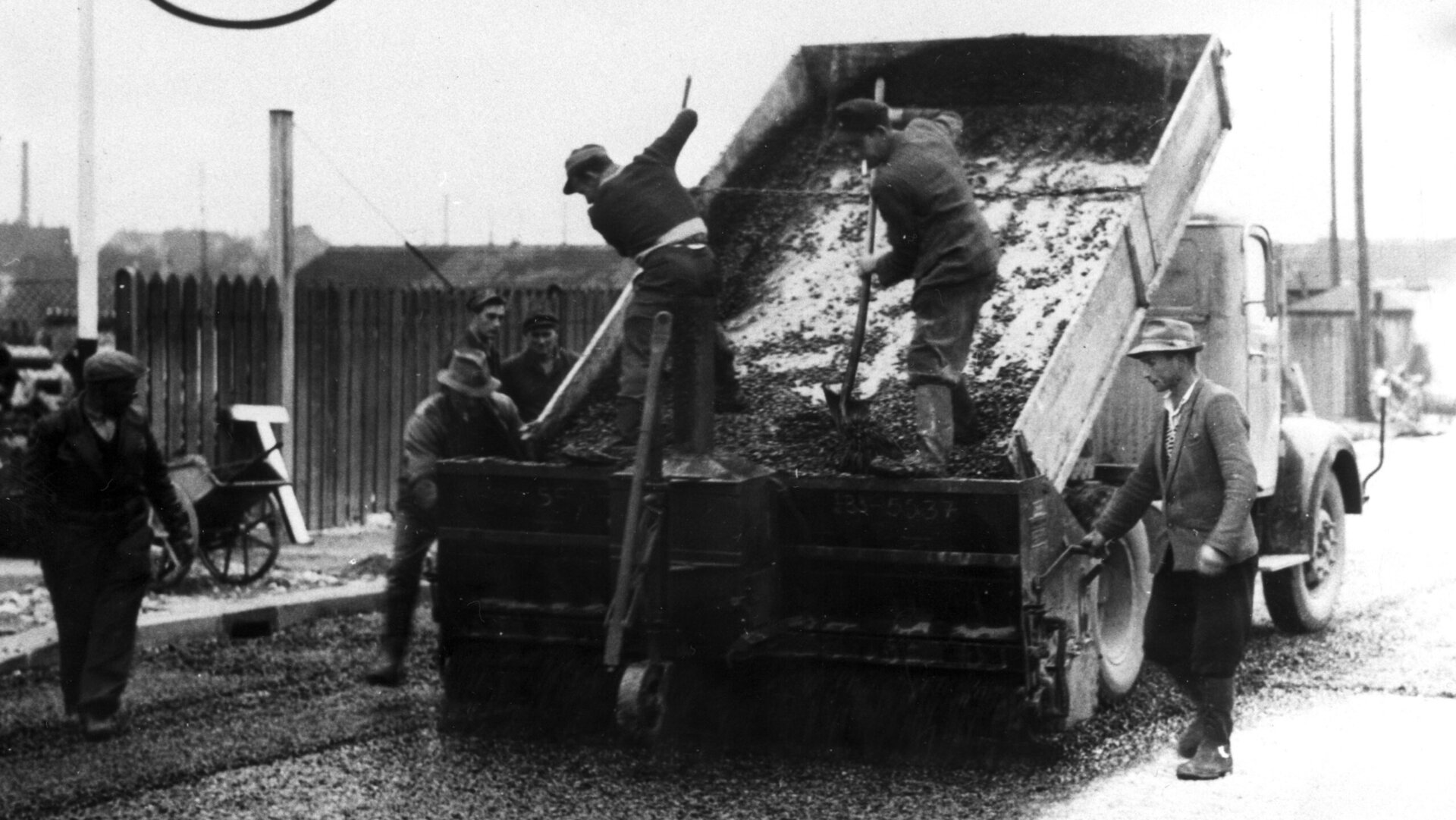Technical progress and 'guests' who become colleagues.
Recovery. The buzzword of the 1950s and 1960s. People look ahead, get involved and build. The economy is booming, prosperity is growing. At LEONHARD WEISS, too, there was a sense of new beginnings: the order situation was good, and there were big plans on the table. But the construction company now has another problem. There is a shortage of labour.
In the Federal Republic of Germany, unemployment fell from 11 per cent to 1.3 per cent between 1950 and 1960 – there was full employment. It was becoming increasingly difficult to find people for the 'back-breaking jobs' in the construction industry. At the same time, wage costs were rising along with the standard of living in Germany. LEONHARD WEISS and other industrial and construction companies responded to these challenges with two strategies: mechanisation and the employment of "guest workers".
The speed of technological development is particularly evident in track construction. On the one hand, the machines became more powerful – the first tamping machine could already lay 120 meters of track in an hour – four times as much as a whole construction team! The machines that have been in use since 1962 can easily tamp 500 meters in an hour - and they can also lift and align tracks. On the other hand, technology is constantly being adapted to people. Operating that first tamping machine was a real ordeal – the operator was sandwiched between two tamping units and had to hold a lever all the way through, enduring all the vibrations without any damping. 20 years later, the driver sits in an enclosed, sprung cockpit and controls the tamping units with foot pedals.
From 1959, LEONHARD WEISS used the most modern machines of the time, such as the first quick-change train from 1979 – a machine that continuously removes and installs rails and sleepers in a continuous system. It could cover up to 3,000 meters per shift.
Thanks to mechanisation, the number of people employed in track construction in Germany fell from 32,200 t 10,600 between 1951 and 1985. However, the increasingly demanding construction sites could not be managed without a reliable workforce. In 1955, Germany signed its first recruitment agreement with Italy. For LEONHARD WEISS, too, this was a great opportunity to find motivated workers for the many construction projects.
In late summer, more than a quarter of a million people from abroad filled the gaps in the West German labour market. They helped and are helping our fully employed economy to satisfy the insatiable demand for capital goods and to cope with the undeniable construction boom, despite all the denials of the Bundesbank and all the restrictive measures of the Bundesbank.
Accommodating the more than 4,000 people who came to the district of Göppingen in 1960 alone was a major challenge for the local authorities. At the time, LEONHARD WEISS employed 250 workers from Italy and Greece in Göppingen and Crailsheim. The company relied on these foreign workers to keep the business running. The company was well aware of its social responsibility. Instead of simple barracks, for example, the management planned to build permanent housing. Negotiations with mayors and district authorities initially failed, however, because they were unwilling to provide building land for this purpose.
By 1973, some 14 million people had come to work in West Germany, without whom the economic upswing, the German economic miracle, would not have been possible. And the success story of LEONHARD WEISS is not just about technical progress. It is also about how different people come together again and again to form good teams – some of them "guest workers" who quickly become valued colleagues in their daily work. What unites them all to this day is "the joy of building". And the feeling of belonging to the LEONHARD WEISS family.
